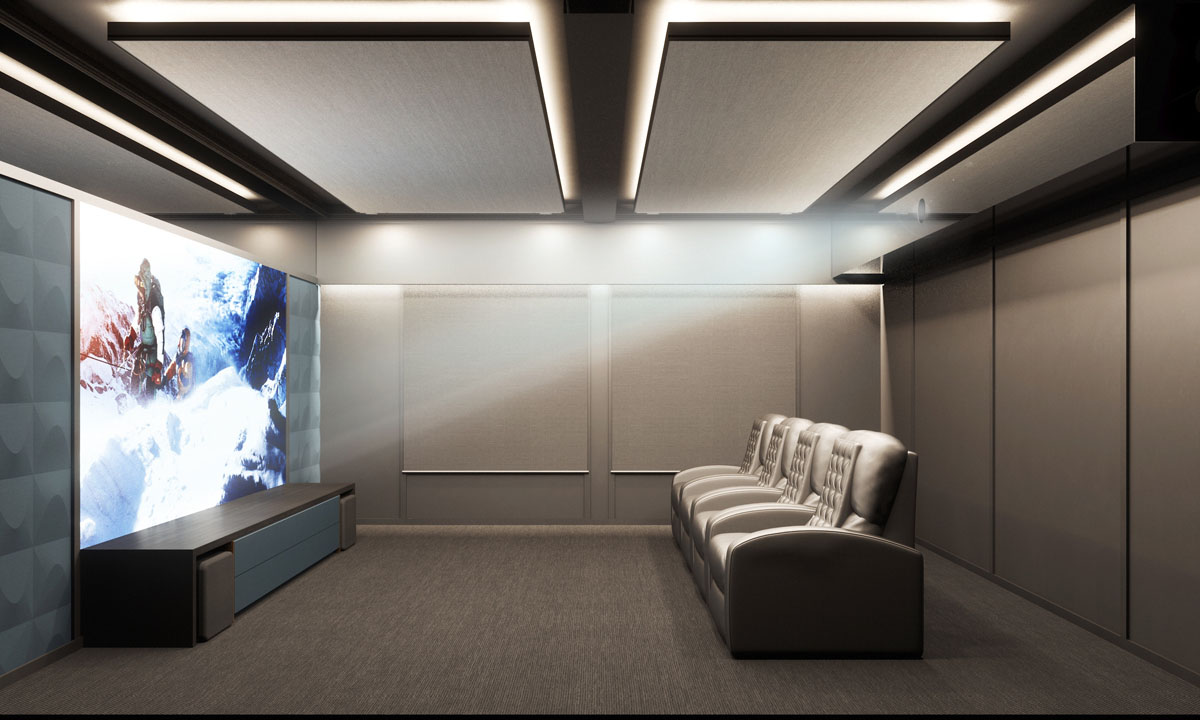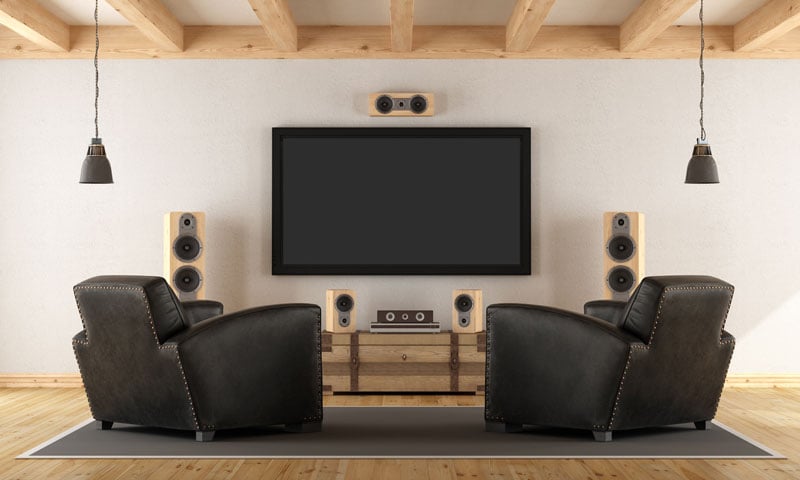Home Theater 101: Whatever You Required to Know for a Cinematic Experience at Home
Creating a home cinema that measures up to the cinematic experience of a business theater involves cautious factor to consider of multiple parts, including display choice, audio systems, and space layout. Whether you are considering the ideal screen size or the ins and outs of surround noise, comprehending these fundamentals is essential.
Choosing the Right Screen
When setting up a home cinema, selecting the appropriate display can make or break the checking out experience - tampa home theater. The screen works as the focal point of your configuration, affecting image top quality, seeing angles, and total aesthetic. Secret variables to take into consideration consist of display kind, resolution, and dimension
First, identify the proper display size based upon your area dimensions and seating range. A basic guideline is to rest roughly 1.5 to 2.5 times the angled screen dimension for optimal watching. Next, choose between numerous screen types, such as fixed-frame, mechanized, or retracting displays, each offering distinctive benefits. Fixed-frame displays usually supply the most effective image top quality, while motorized options permit adaptability precede use.
Resolution is one more crucial factor. For an absolutely immersive experience, take into consideration a screen designed for 4K and even 8K content, making sure sharpness and quality. Additionally, consider the screen's gain, which influences brightness and contrast; a higher gain can enhance illumination in well-lit areas, while a lower gain might be preferable for darker environments.
Choosing Sound Equipment
Audio tools is an essential part of any home cinema system, considerably improving the general viewing experience. The selection of audio equipment can figure out the deepness, quality, and immersion of sound, crucial for producing a cinematic environment.
When selecting audio devices, take into consideration a border audio system, which commonly includes a receiver, multiple speakers, and a subwoofer. A 5.1 or 7.1 network system is recommended, where the first number represents the audio speakers and the second the speaker, supplying an immersive soundscape. The receiver is the heart of the system, handling audio and video signals, and ought to support modern-day layouts like Dolby Atmos for a boosted spatial experience.
Quality speakers are vital; look for designs that provide a balanced sound profile with excellent bass action. Floor-standing speakers can produce richer sound, while shelf choices conserve room. Furthermore, think about cordless alternatives for convenience of setup, although wired systems typically deliver remarkable efficiency.

Optimal Seating Arrangements
Producing an excellent home cinema experience pivots dramatically on ideal seating plans. The plan of seats plays a vital function in both convenience and watching top quality, straight affecting the total motion picture experience.
First, take into consideration the display size and seeing range. An usual guideline is to position seats at a distance around 1.5 to 2.5 times the diagonal dimension of the display. This ensures an immersive experience without straining the eyes.
Following, altitude is important. If your seating remains in a tiered layout, the back rows must be higher than the front to stay clear of blockages. For flat seating, ensure that the front row is not also near to the screen, and that everyone has a clear line of view.
Additionally, think about the plan pop over to this web-site in regards to social characteristics. Group seats can enhance the communal experience, while private seats may be liked for personal watching.

Lastly, focus on comfort with ergonomic seating that sustains extended viewing durations. Integrating recliners or supported seats can considerably basics improve the experience, making the home movie theater a recommended destination for both enjoyment and relaxation.
Lighting and Setting
Effective illumination and setting are vital components of a properly designed home theater, as they significantly influence the watching experience. The right illumination can boost the motion picture feel, while poor options can take away from it. For optimal outcomes, think about a split lights technique that includes ambient, job, and accent illumination.
Ambient illumination gives basic illumination, guaranteeing that the room is not totally dark, which can stress the eyes. Dimmer switches are extremely recommended, enabling modifications based upon the web content being viewed. Task illumination, such as wall surface sconces or floor lights, supplies functional lighting for activities like analysis or navigating the area without interfering with the general environment.
Accent illumination can be utilized to highlight building functions or develop prime focus, adding depth and interest to the space. LED strip lights behind screens or along shelves can supply a subtle radiance that enhances the aesthetic experience without overwhelming the customer.

Wiring and Installation Tips
A well-planned electrical wiring configuration is crucial for achieving optimal performance in your house theater system. Appropriate electrical wiring not just ensures premium sound and video signals however also enhances the total aesthetic of your area. Begin by drawing up your design, identifying where each part will be positioned, including your screen, audio speakers, and receiver.
When picking cables, prioritize high-grade, suitably evaluated circuitry to reduce signal loss. HDMI cords must be used for video links, while audio speaker wire must match the requirements of your audio speakers and amplifier. Decide for in-wall ranked cables to abide with security requirements and keep a clean appearance.

Final Thought
In summary, producing an extraordinary home cinema experience calls for cautious consideration of different aspects, consisting of screen selection, audio equipment, seating setups, lights, and circuitry. Each component plays a vital duty in accomplishing optimum performance and setting, inevitably improving the enjoyment of home entertainment. By prioritizing these factors, a motion picture ambience can be effectively reproduced, permitting immersive checking out experiences that match that site conventional movie theater setups. Focus to detail in each location is vital for total contentment.
Creating a home movie theater that rivals the cinematic experience of a commercial theatre involves cautious consideration of several parts, including display selection, audio systems, and space layout.When establishing up a home theater, choosing the best screen can make or break the watching experience. Next, pick in between different display kinds, such as fixed-frame, motorized, or retractable displays, each offering distinct advantages. For a truly immersive experience, think about a display made for 4K or even 8K content, making certain intensity and clearness.In summary, producing an extraordinary home cinema experience needs mindful consideration of various aspects, consisting of screen selection, audio equipment, seating setups, lights, and electrical wiring.